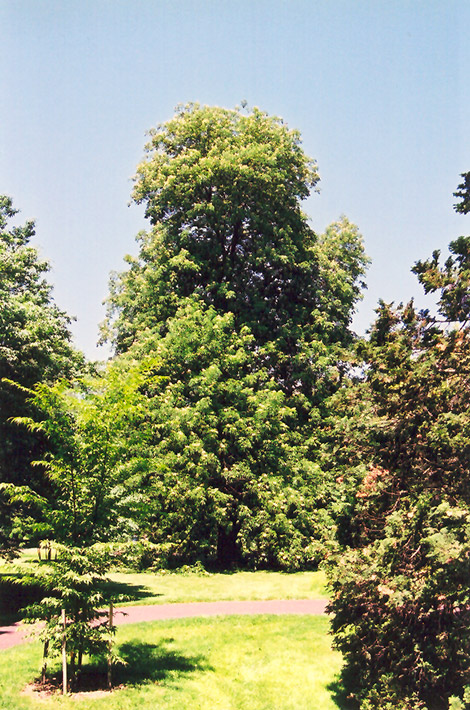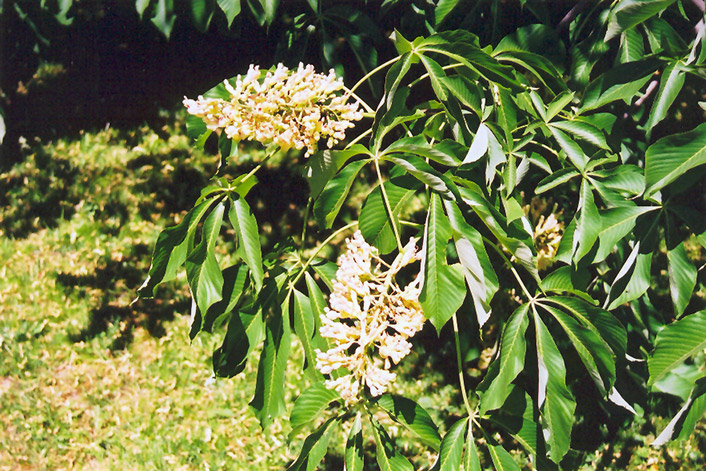>> Home
Height: 50 feet
Spread: 45 feet
Sunlight:
![]()
![]()
Hardiness Zone: 4
Description:
A large and reliable shade tree with pretty yellow flowers in spring and reliable fall color; a good combination accent and shade tree for large landscapes; spiny seeds may necessitate some maintenance
Ornamental Features
Yellow Buckeye features bold spikes of lemon yellow flowers rising above the foliage in mid spring. It has dark green deciduous foliage which emerges light green in spring. The palmate leaves turn an outstanding coppery-bronze in the fall. However, the fruit can be messy in the landscape and may require occasional clean-up.
Landscape Attributes
Yellow Buckeye is a dense deciduous tree with a shapely oval form. Its average texture blends into the landscape, but can be balanced by one or two finer or coarser trees or shrubs for an effective composition.
This is a high maintenance tree that will require regular care and upkeep, and is best pruned in late winter once the threat of extreme cold has passed. It is a good choice for attracting squirrels to your yard. Gardeners should be aware of the following characteristic(s) that may warrant special consideration;
- Messy
Yellow Buckeye is recommended for the following landscape applications;
- Accent
- Shade
Planting & Growing
Yellow Buckeye will grow to be about 50 feet tall at maturity, with a spread of 45 feet. It has a high canopy with a typical clearance of 6 feet from the ground, and should not be planted underneath power lines. As it matures, the lower branches of this tree can be strategically removed to create a high enough canopy to support unobstructed human traffic underneath. It grows at a medium rate, and under ideal conditions can be expected to live for 80 years or more.
This tree does best in full sun to partial shade. It prefers to grow in average to moist conditions, and shouldn't be allowed to dry out. It is not particular as to soil type or pH. It is somewhat tolerant of urban pollution. This species is native to parts of North America.

